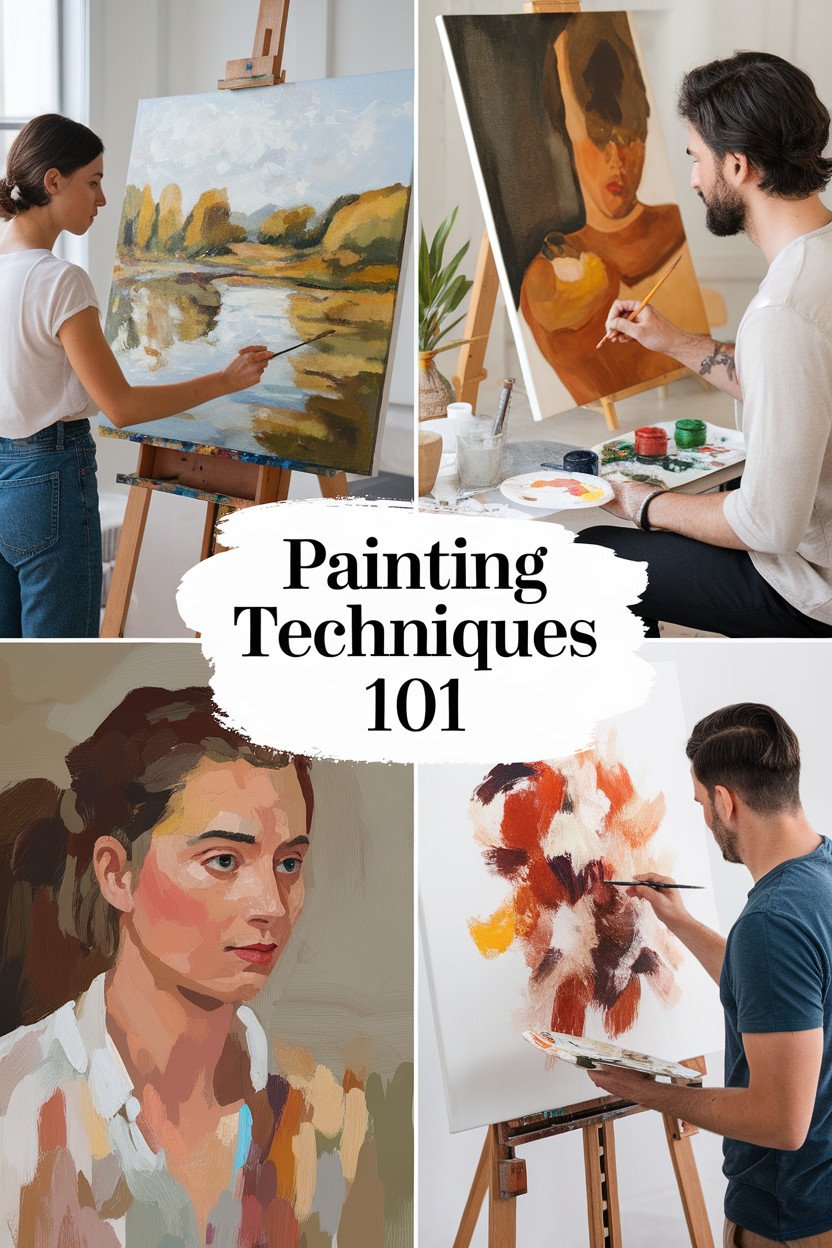Welcome to Painting Techniques 101, your ultimate guide to mastering the art of brushwork. Whether you’re a beginner or looking to enhance your skills, this section will introduce you to the world of painting techniques. We’ll cover everything from the basics to advanced techniques in acrylic, oil, and watercolor painting. You’ll learn step-by-step painting techniques to help you achieve impressive results. Let’s dive in!
Key Takeaways:
- Painting Techniques 101 is your gateway to mastering the art of brushwork.
- This section covers everything from the basics to advanced techniques in acrylic, oil, and watercolor painting.
- You’ll learn step-by-step painting techniques to help you achieve impressive results.
Getting Started with Painting Techniques
Are you new to painting or looking to brush up on your skills? Painting Techniques 101 has got you covered. In this section, we’ll introduce you to different painting techniques suitable for beginners, including acrylic, oil, and watercolor painting.
Acrylic painting is a great medium for beginners as it’s versatile and easy to work with. Here are some acrylic painting techniques to get you started:
- Layering colors to create depth and vibrancy
- Dry brushing for a textured effect
- Wet-on-wet technique for blending and creating soft edges
If you’re interested in oil painting, here are a few oil painting techniques for beginners:
- Blending colors by applying wet paint over still-wet paint
- Creating texture with impasto, which is applying thick paint with a palette knife
- Dry brushing for a subtle and textured effect
Watercolor painting is a beautiful and delicate form of painting. Here are some techniques to help you get started:
- Wet-on-wet technique for blending colors and creating soft edges
- Glazing, which is layering transparent washes of color to create depth
- Using salt or alcohol to create a unique texture on wet paint
Now that you have a basic understanding of painting techniques, it’s time to experiment and find your own style. In the next section, we’ll explore step-by-step painting techniques to guide you through creating your own masterpiece.
Step-by-Step Painting Techniques
Are you ready to take your painting skills to the next level? In this section, we will guide you through step-by-step painting techniques that will help you create beautiful artworks with ease. Whether you’re a beginner or looking to improve your existing skills, these techniques are perfect for you.
Our step-by-step approach breaks down the painting process into manageable steps. Follow these steps and watch your artwork come to life:
- Choose your subject and gather your materials
- Sketch out your composition on your canvas
- Block in the basic shapes and colors
- Add layers of detail and depth
- Refine your painting with finishing touches
By following these steps, you’ll achieve impressive results in no time. With practice, you’ll learn to develop your own painting process that suits your style and preferences.
If you’re feeling overwhelmed, remember that it’s okay to make mistakes. Painting is a learning process, and every mistake is an opportunity to grow and improve. Don’t be afraid to experiment and try new things!
Now, let’s dive into some specific step-by-step painting techniques that you can try:
- Create a gradient background using blending techniques
- Paint a simple landscape using basic shapes and color mixing
- Add texture to your painting using dry brushing or palette knife techniques
- Create a portrait using a step-by-step layering process
- Paint a still life using a tonal approach
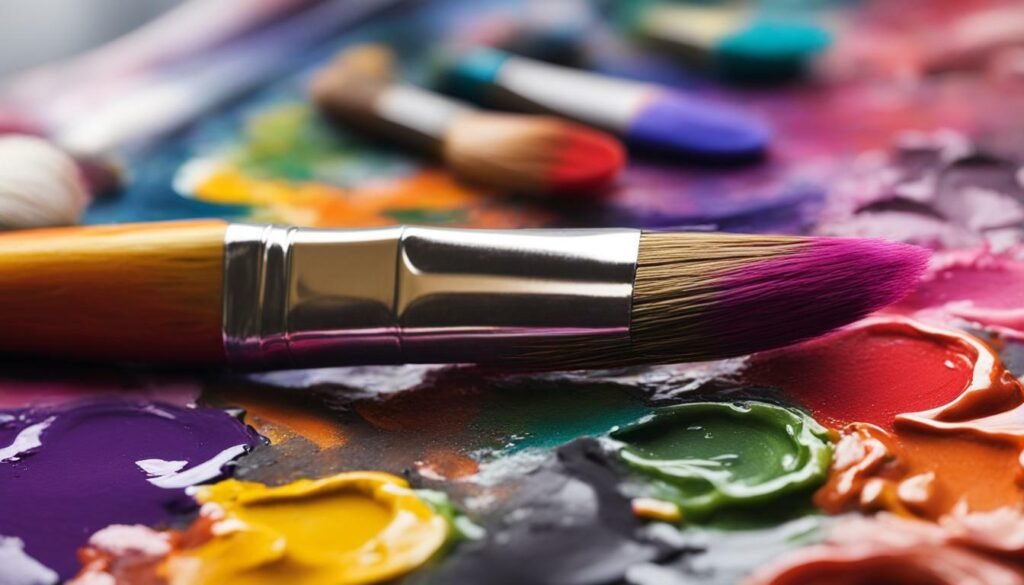
Remember to take your time and enjoy the process. Painting is a wonderful way to express yourself and unleash your creativity. With these step-by-step painting techniques, you’re well on your way to becoming a painting pro!
Exploring Acrylic Painting Techniques
If you’re looking for an affordable and versatile painting medium, acrylics are a great choice. Here are some acrylic painting techniques that will help you create stunning, textured artworks:
Texture Painting Techniques
- Impasto: Apply thick layers of paint to create a rough texture.
- Palette knife: Use a palette knife to apply paint in a textured manner.
- Stippling: Dab paint onto the canvas using the tip of a brush.
Texture adds dimension and interest to your paintings, and acrylics are perfect for creating a variety of textures.
Blending Techniques
- Dry brushing: Use a dry brush to blend colors without adding water or other mediums.
- Wet-on-wet: Apply wet paint onto a wet surface to create soft, blended colors.
- Glazing: Thinly layer transparent or opaque paint to create a luminous effect.
Blending is the key to creating smooth transitions and stunning visual effects in your paintings.
Layering Techniques
- Underpainting: Create a base layer of color to give your painting depth and richness.
- Glazing: Layer transparent or opaque paint to create a luminous effect.
- Scumbling: Apply a rough layer of paint over dry paint to create a textured effect.
Layering is an essential technique for creating depth and complexity in your paintings. Acrylics are perfect for layering because they dry quickly.
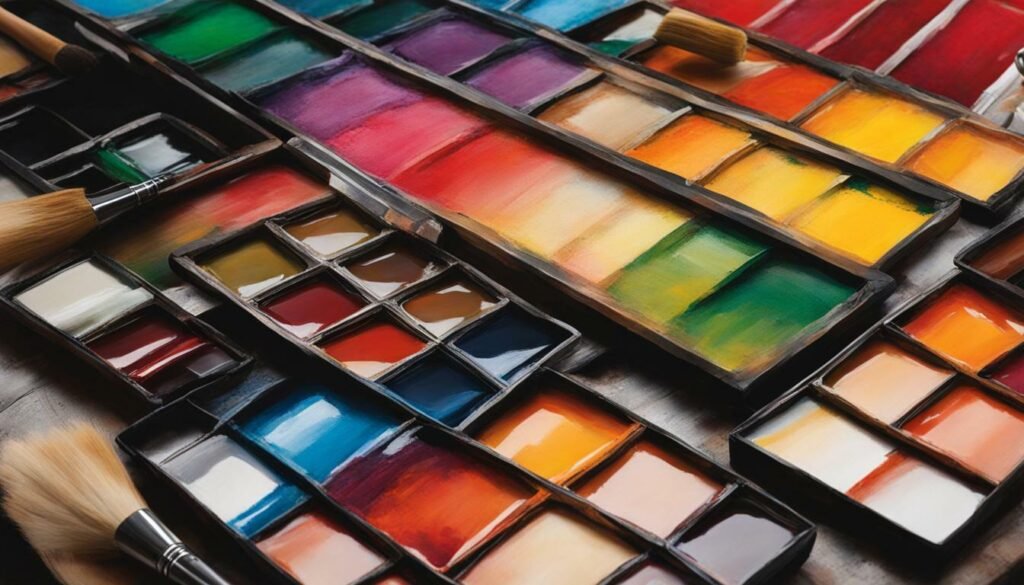
By experimenting with these acrylic painting techniques, you can create stunning, textured artworks that are full of depth and richness. Don’t be afraid to play around and see what works best for you.
Mastering Oil Painting Techniques
Congratulations on reaching this section! Oil painting is a beautiful and timeless art form that has been used for centuries to create awe-inspiring masterpieces. By mastering oil painting techniques, you can create your own stunning works of art that will be treasured for generations to come.
Blending Techniques
Blending is a fundamental skill in oil painting. It allows you to create smooth transitions between colors, adding depth and dimension to your artwork. Here are some blending techniques to master:
- Wet-on-wet blending: This technique involves painting wet paint onto a wet surface. It allows for easy blending and can create beautiful gradients.
- Dry brush blending: This technique involves using a dry brush to blend colors. It can create a more textured and rougher effect.
- Grisaille blending: This technique involves painting in monochrome first, then adding layers of color on top. It can create a more realistic and lifelike effect.
By mastering these blending techniques, you can create stunning oil paintings that are full of depth and dimension.
Texture Painting Techniques
Texture adds interest and tactile elements to your artwork. Here are some texture painting techniques to try:
- Impasto: This technique involves applying thick paint to create a raised texture. It can add a three-dimensional quality to your artwork.
- Scumbling: This technique involves applying a thin layer of paint over a dry layer, creating a broken texture effect.
- Glazing: This technique involves applying thin layers of transparent paint to create a smooth, shiny effect.
By experimenting with these texture painting techniques, you can create oil paintings that are not only visually stunning but also engaging to touch.
Oil Painting Tips
Here are some useful tips to keep in mind as you delve into the world of oil painting:
- Use a good quality canvas or board that is primed for oil painting.
- Start with a limited color palette and gradually add more colors as you become more comfortable with the medium.
- Use a medium such as linseed oil to thin your paint and increase its flow.
- Clean your brushes thoroughly with a solvent such as mineral spirits to keep them in good condition.
By keeping these tips in mind and practicing regularly, you can master the art of oil painting and create artwork that is truly breathtaking.
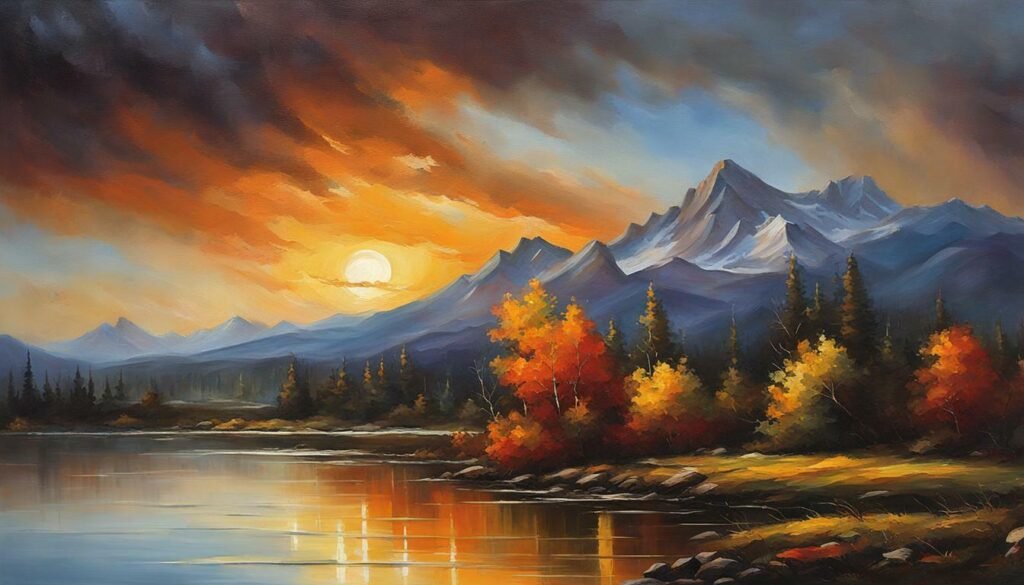
Watercolor painting techniques offer a unique way of expressing your creativity. With its subtle hues and translucent nature, watercolor painting can produce stunning visual effects that are difficult to achieve with other media. Here are some tips to help you unleash your watercolor painting techniques:
Blending Techniques
- Use a wet-on-wet technique to create soft, blended edges
- Try layering multiple colors on top of one another while the paint is still wet
- Use a dry brush technique to lift color and create texture
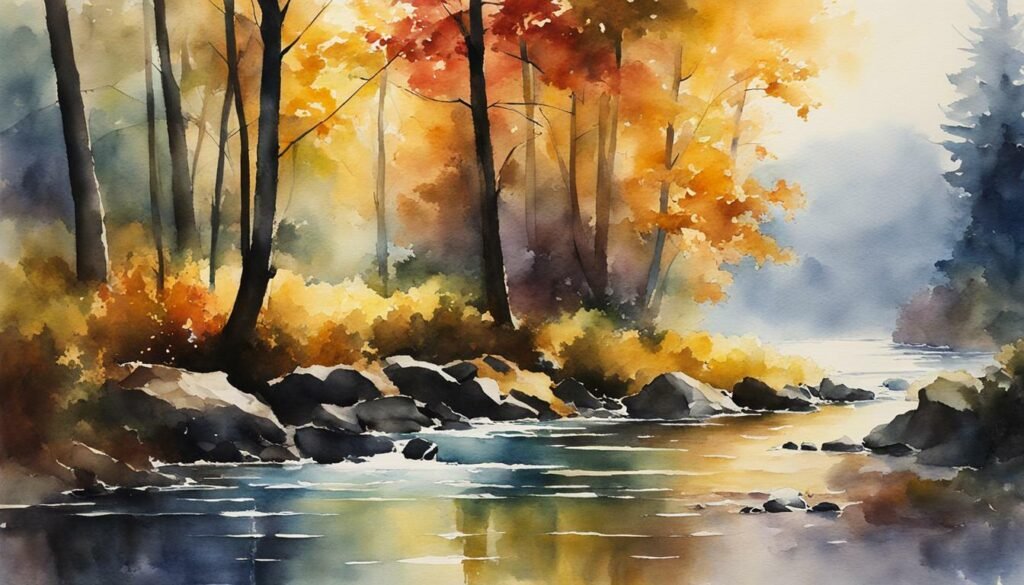
- Use salt to create a textured effect in the background of your painting
- Try using a sponge to apply color for a rough, textured look
- Use a palette knife to scrape away paint and create texture in the foreground of your painting
Experiment with Color
One of the most exciting things about watercolor painting is the endless possibilities when it comes to color. Here are some ways to experiment with color:
- Try using different color combinations to create a mood or tone in your painting
- Use a limited color palette for a harmonious look
- Experiment with different water-to-paint ratios to create varying levels of transparency and intensity
By using these tips and techniques, you can start to create beautiful watercolor paintings that truly showcase your artistic talent.
Texture Painting Techniques
Texture adds depth and richness to your paintings, creating a tactile quality that draws the viewer’s eye. In this section, we will explore various texture painting techniques that will bring your artwork to life. Whether you work with acrylics, oils, or watercolors, these techniques can be applied to any medium.
Acrylic Painting Techniques
Acrylic paint is versatile and can be used to create numerous textures. Here are some techniques to experiment with:
- Mixing sand or other materials into the paint for a gritty texture
- Using a palette knife to create peaks and ridges
- Stippling with a brush or sponge to create a stippled effect
Don’t be afraid to mix colors and textures for a dynamic effect. Try layering different textures on top of each other for added depth.
Oil Painting Techniques
Oil paint has a smooth and buttery consistency, making it perfect for creating textures. Here are some techniques to try:
- Using a palette knife to create thick impasto texture
- Dragging a dry brush over wet paint to create a scumbling effect
- Adding sand or sawdust to the paint for a grainy texture
Experiment with different techniques to find the ones that work best for your painting. Remember to let each layer dry before adding additional texture.
Watercolor Painting Techniques
Watercolor is a delicate medium that can be challenging to work with when creating textures. Here are some techniques to try:
- Layering washes to create a smooth gradient effect
- Using salt to create a grainy texture
- Scratching the surface of the paper to create a rough texture
Be patient and allow the layers to dry before adding additional texture. Remember that watercolor is a fluid medium, so allow the paint to flow and blend naturally.
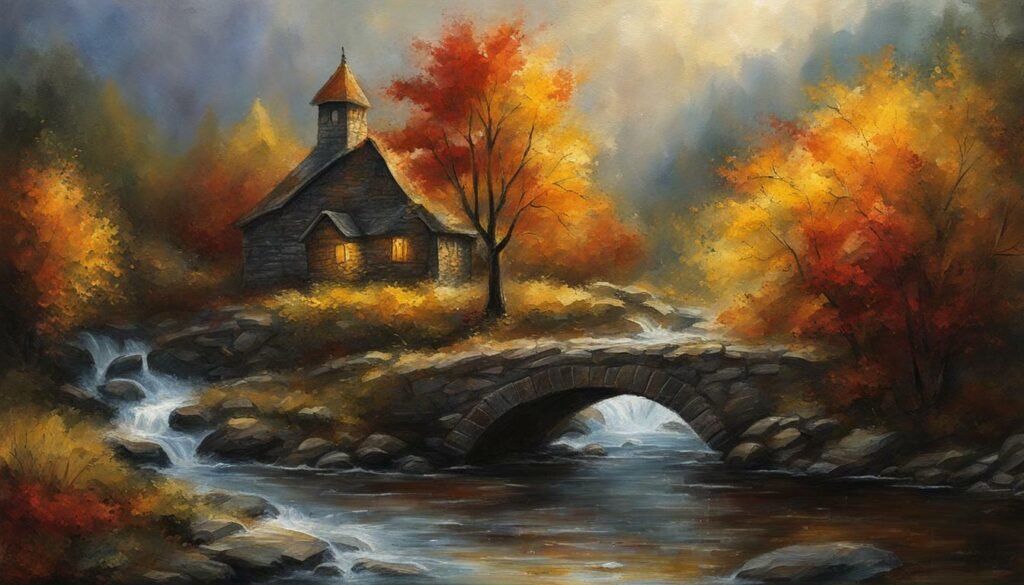
Experimenting with textures is a fun and creative way to add interest to your paintings. Don’t be afraid to try new techniques and mix different textures for a visually striking effect. With practice and patience, you’ll soon be creating masterpieces that are as satisfying to touch as they are to look at.
Mastering Blending Techniques
Blending techniques are essential to creating smooth gradients and transitions between colors in your paintings. Whether you’re using acrylics, oils, or watercolors, mastering blending techniques will take your art to the next level.
Here are some tips and tricks to help you perfect your blending skills:
- Start with a clean brush to avoid unwanted color mixing.
- Dab your brush with a clean cloth or tissue to remove excess paint before blending.
- Use the colors you want to blend side by side on your palette for easy access.
- Apply the lighter color first, then gradually add the darker color, blending as you go.
- Use a dry brush or paper towel to blend and soften edges.
- Experiment with different brush strokes and pressure to achieve different blending effects.
Take your time with blending and remember that practice makes perfect. Don’t be afraid to experiment and try different approaches to find what works best for you.
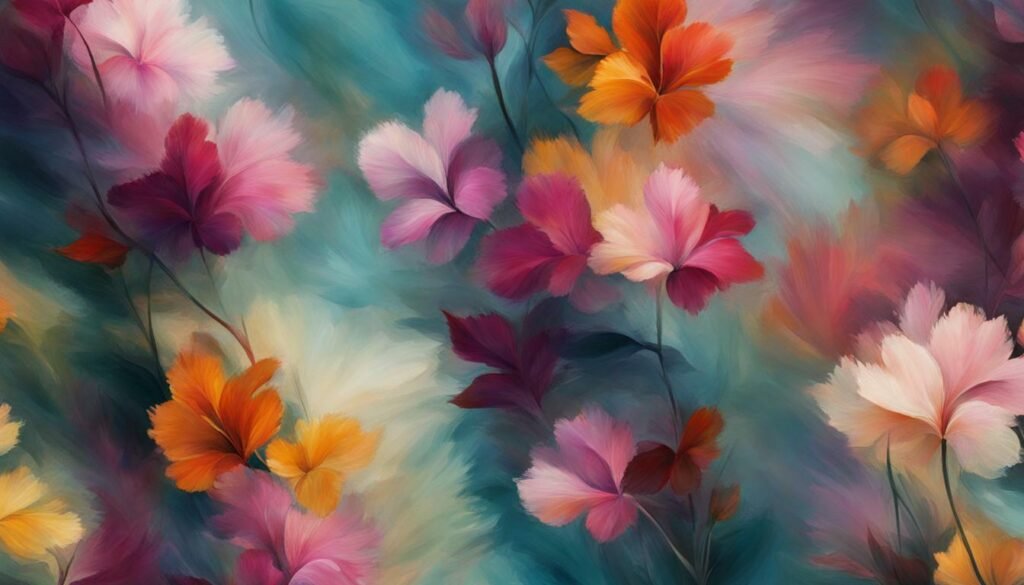
Enhancing Your Skills with Advanced Techniques
Congratulations, you’ve already gained a solid foundation in painting techniques! Now, it’s time to take your skills to the next level and explore advanced painting techniques. Keep in mind that while these techniques may require more time and practice, the end result is worth it.
1. Glazing
Glazing is a technique that involves layering transparent or semi-transparent colors over each other to create depth and luminosity. It’s commonly used in oil painting, but can also be applied to acrylic and watercolor. Follow these steps to master glazing:
- Apply a base layer of color and let it dry completely
- Mix a small amount of your glaze color with a glazing medium or mineral spirits
- Apply the glaze layer over the base layer, being careful not to disturb the base layer too much
- Repeat the glaze layer until you reach the desired depth and luminosity
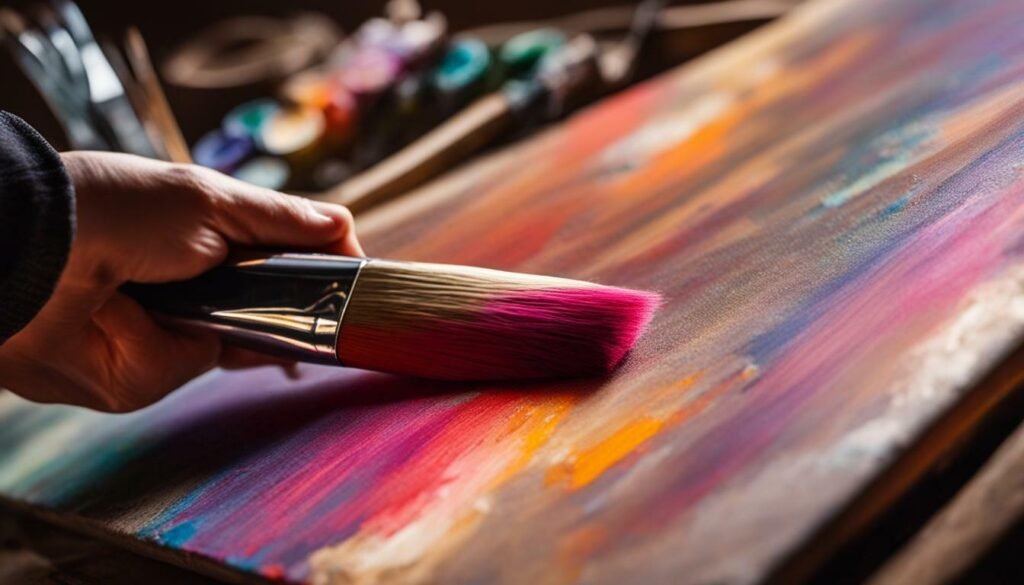
Impasto is a technique that involves applying thick layers of paint to create a textured and three-dimensional effect. It’s commonly used in oil painting, but can also be applied to acrylic. Follow these steps to master impasto:
- Apply a thick layer of paint using a palette knife or brush
- Create texture by dragging a comb, fork, or other tool through the wet paint
- Let the paint dry completely before applying additional layers or details
3. Wet-on-Wet
Wet-on-wet is a technique that involves applying wet paint onto wet paint, creating soft edges and blending. It’s commonly used in watercolor and oil painting. Follow these steps to master wet-on-wet:
- Apply a base layer of wet paint
- Apply additional wet paint onto the wet base layer, blending the colors together
- Use a clean brush to lift some of the wet paint, creating highlights and texture
- Repeat the wet-on-wet layer until you reach the desired effect
4. Alla Prima
Alla prima is a technique that involves completing a painting in one sitting. It’s commonly used in oil painting and requires quick decision-making and brushwork. Follow these steps to master alla prima:
- Sketch out your composition lightly in pencil
- Apply a base layer of paint, blocking in the main shapes and colors
- Work quickly and loosely to complete the painting in one sitting
- Embrace imperfections and allow the painting to have a spontaneous and fresh quality
Tips and Tricks for Painting Success
Congratulations on embarking on your painting journey! Here are some helpful tips and tricks to enhance your painting experience:
Acrylic Painting Techniques
- Use a fine mist spray bottle to keep your palette moist and prevent your acrylics from drying out too quickly.
- Mix your acrylics with water or a medium to achieve different consistencies and effects.
- Experiment with different brushes to create a variety of marks, from broad strokes to fine details.
- Don’t be afraid to layer your paints to add depth and dimension to your artwork.
Oil Painting Techniques
- Start with a toned canvas or underpainting to establish the overall tone of your artwork.
- Use a medium to thin your oil paints and create transparent glazes.
- Experiment with different brushstrokes and techniques, such as impasto and scumbling, to create texture and visual interest.
- Allow plenty of drying time between layers to prevent your paint from becoming muddy.
Watercolor Painting Techniques
- Invest in high-quality watercolor paper for the best results.
- Use masking fluid to preserve areas of white in your painting and create crisp edges.
- Experiment with wet-on-wet and wet-on-dry techniques to create different effects.
- Blend colors directly on your paper to create smooth transitions.
Remember, practice makes progress! Keep experimenting with different painting techniques and don’t be afraid to make mistakes. Happy painting!
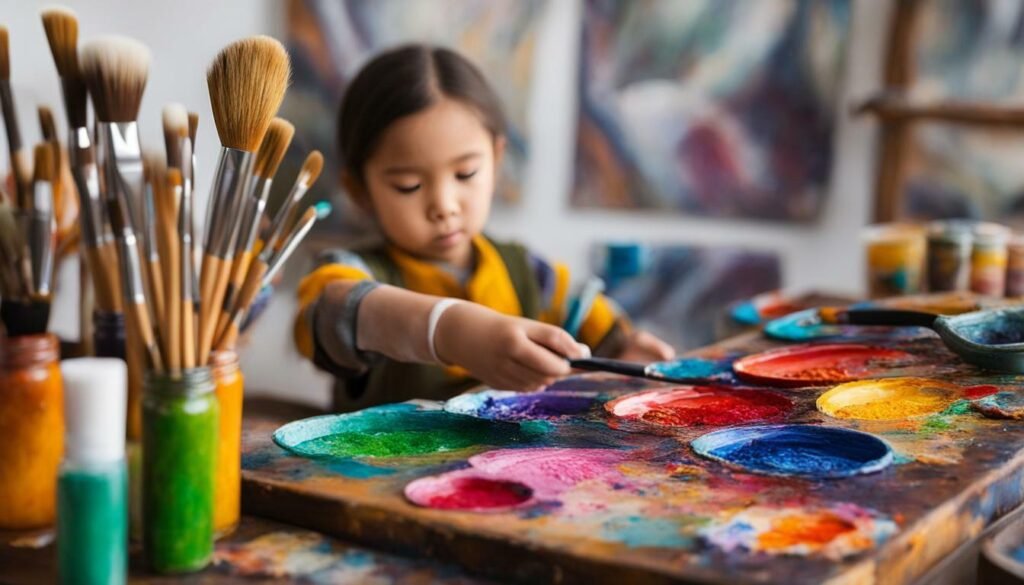
Ready to take your paintings to the next level? Then it’s time to explore mixed media techniques. By combining different mediums, you can create unique and captivating works of art.
Here are some mixed media techniques you can experiment with:
- Collage: Use paper, fabric, or other materials to add texture and dimension to your paintings.
- Found object art: Incorporate found objects, such as buttons, coins, or old keys, into your paintings.
- Layering: Layer acrylics and watercolors to create intriguing visual effects.
- Mixed media sculpture: Combine paint with found objects, clay, or other materials to create three-dimensional works of art.
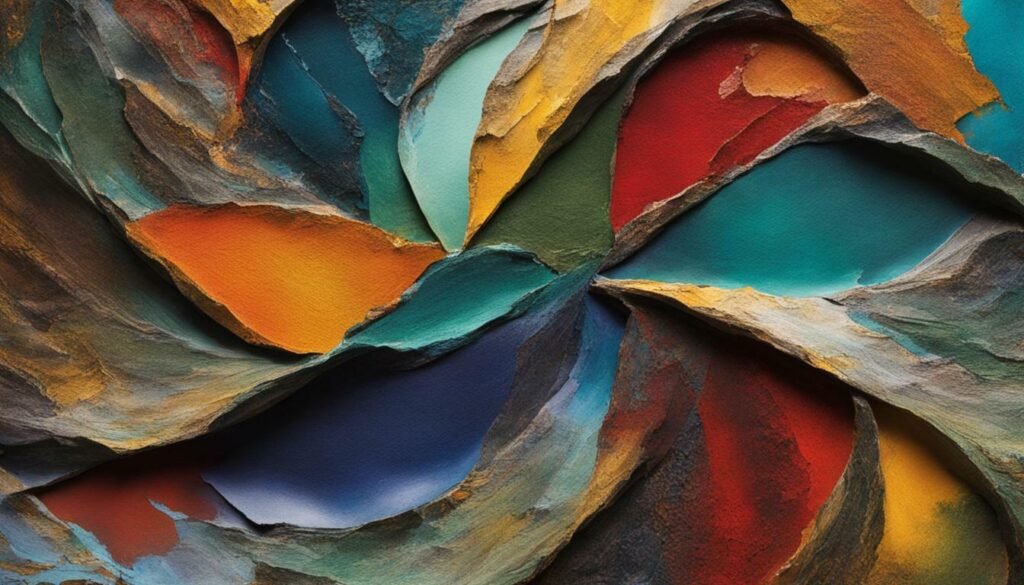
Don’t be afraid to experiment with different combinations of mediums and techniques. Remember, the goal of mixed media is to push the boundaries and create something truly unique.
When combining acrylic, oil, and watercolor paints, keep in mind that they have different properties and may require different techniques. Here are some tips to help you achieve success:
- Start with a plan: Sketch out your design before you start adding layers to ensure everything fits together.
- Test materials: Experiment with different materials to see how they interact with each other.
- Layer carefully: Apply layers in the correct order to avoid muddying colors or damaging materials.
- Be patient: Allow layers to dry completely before adding more materials or painting over them.
With mixed media techniques, the possibilities are endless. Let your imagination guide you and have fun exploring new ways to create beautiful works of art.
Exploring Experimental Techniques
Are you ready to break out of your comfort zone and try something new? Experimenting with different techniques can help expand your artistic horizons. Here are some experimental painting techniques to try:
- Use unconventional tools to apply paint, such as sponges, feathers, or even your fingers.
- Experiment with layering different mediums, such as acrylics and pastels, to create unique textures.
- Explore the possibilities of collage by incorporating found objects into your artwork.
- Try painting with your non-dominant hand to approach your work from a fresh perspective.
- Use water to dilute your paints in unexpected ways, creating unexpected results.
Remember, there are no rules when it comes to experimental techniques. Allow yourself to make mistakes and embrace the unexpected. Who knows what new creativity will surface?
The Joys of Acrylic Pouring
Acrylic pouring is a technique that involves mixing acrylic paint with a pouring medium to create fluid paintings. It’s a fun and unpredictable way to create unique abstract artworks. Here’s how to get started:
- Mix your desired colors with pouring medium until it reaches a pourable consistency.
- Prepare your canvas surface with a thin layer of white paint to help the poured paint flow smoothly.
- Pour the paint onto the canvas in a steady motion, tilting the canvas to guide the paint and create interesting patterns.
- Allow the artwork to dry completely before adding any finishing touches or sealing the surface.
Acrylic pouring is a technique that requires some experimentation and patience, but the end result can be a stunning, dynamic piece of art.
Exploring Mixed Media Techniques
Integrating multiple media into your artwork can result in captivating, multidimensional works. Here are some mixed media techniques to consider:
- Use found objects, such as newspaper clippings, fabric, or old photos, to create a layered collage.
- Experiment with different combinations of paint and pastels to create unique textures and effects.
- Add depth and dimension by incorporating relief materials, such as sand or modeling paste, into your artwork.
When working with mixed media, the possibilities are endless. Let your imagination and creativity guide you as you explore new techniques and materials.
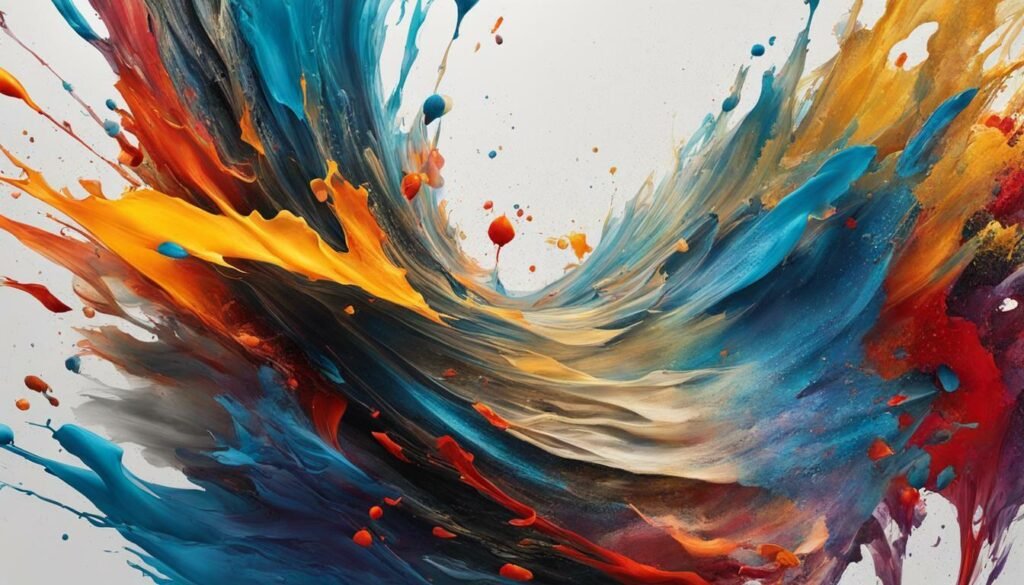
As with any artistic endeavor, painting poses its own set of challenges. But fear not – with a little know-how, you can overcome these obstacles and continue creating beautiful artworks. Here are some common painting issues and their solutions:
Painting Troubleshooting
- If your paint is too thick, try diluting it with water or medium.
- If your paint is too thin, add a small amount of pigment or thickener.
- If your paint is drying too quickly, consider using a retarder or painting in a cooler environment.
Acrylic Painting Techniques
- If you’re experiencing cracking or crazing, try thinning your paint or applying it in thin layers.
- If your acrylic paint is lifting, ensure that your previous layer is completely dry before adding another layer on top.
Oil Painting Techniques
- If you’re experiencing cracking or drying too slowly, try using a different type of medium or adjust your ratio of oil to pigment.
- If your oil painting is yellowing over time, ensure that you’re using high-quality, lightfast paints and avoid painting in direct sunlight.
Watercolor Painting Techniques
- If you’re having trouble achieving vibrant colors, consider layering your pigments or using less water in your mixtures.
- If your colors are bleeding or running, use less water or adjust your paper to be less absorbent.
Remember, don’t be afraid to experiment and try new techniques. With practice and patience, you’ll become a master painter in no time!
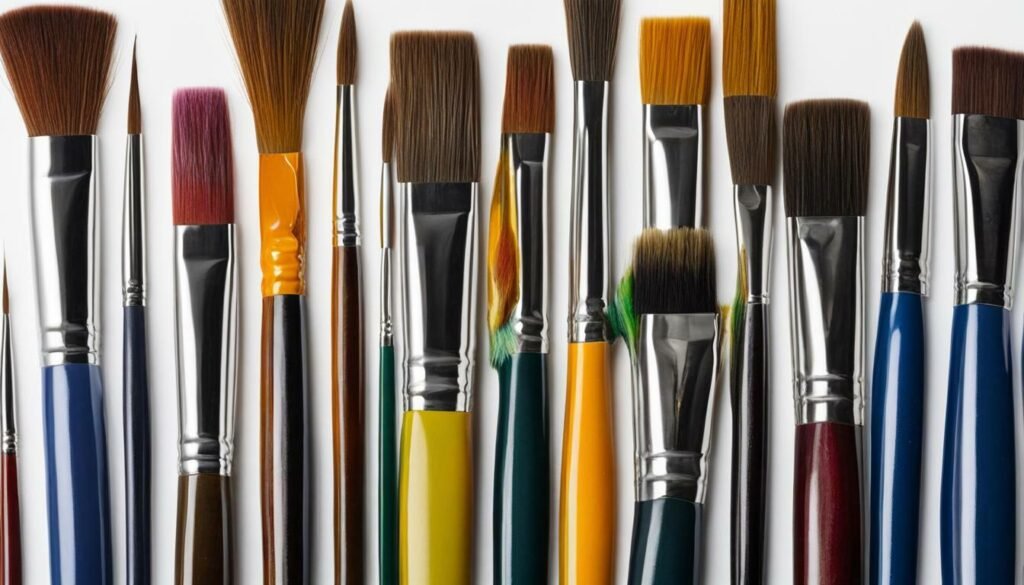
Congratulations on completing Painting Techniques 101! You have taken the first step on a journey that will lead you to become a master painter. Your newfound knowledge and skills will serve as a solid foundation for your future artistic endeavors.
Remember, learning to paint is a journey, not a destination. Keep practicing and exploring new techniques to enhance your skills. With time and dedication, you will create masterpieces that reflect your unique style and vision.
Your Painting Journey
Your painting journey is unique to you. It’s an expression of your creative spirit and your desire to explore the world through art. Embrace your journey and enjoy the process, even when it’s challenging.
- Experiment with different mediums to find what inspires you most. Whether it’s acrylic, oil, or watercolor, each has its own unique qualities to explore.
- Don’t be afraid to make mistakes. They’re an essential part of the learning process. Use them as an opportunity to experiment and try new things.
- Take time to reflect on your progress and celebrate your successes. Seeing your growth over time can be incredibly motivating and inspiring.
Mastery Through Technique
Mastering painting techniques is a continuous process that requires patience, persistence, and practice. It’s the technical foundation that enables you to create the art you envision.
- Acrylic painting techniques allow for layering, texture, and vibrant colors.
- Oil painting techniques offer richness, depth, and luminosity.
- Watercolor painting techniques create delicate and translucent effects.
By exploring and mastering different painting techniques, you can push the boundaries of your creativity and unlock new artistic possibilities.
Take Your Painting to the Next Level
If you’re passionate about painting, take your skills to the next level with advanced techniques, mixed media, and experimental painting techniques.
- Advanced painting techniques challenge and inspire you to reach new levels of mastery.
- Mixed media techniques allow you to combine different mediums and explore new creative possibilities.
- Experimental painting techniques encourage you to break rules and embrace spontaneity.
Whatever path you choose, remember that the journey to painting mastery is a lifelong endeavor. Embrace the process, enjoy the journey, and let your creative spirit lead the way.
FAQ
Q: What is Painting Techniques 101?
A: Painting Techniques 101 is a comprehensive guide that introduces you to various painting techniques, whether you’re a beginner or looking to enhance your skills.
Q: What will I learn in Painting Techniques 101?
A: You will learn the basics of painting, step-by-step techniques, and explore different mediums such as acrylic, oil, and watercolor. You will also learn about texture painting, blending techniques, and advanced painting techniques.
Q: Can I use different mediums together?
A: Yes! In our sections on mixed media and experimental techniques, we explore combining acrylic, oil, and watercolor with other mediums to create unique and captivating artworks.
Q: What if I encounter challenges while painting?
A: In our troubleshooting section, we address common painting challenges and provide solutions to help you overcome them. From paint drying too quickly to correcting mistakes, we’ve got you covered.
Q: How can I enhance my painting skills?
A: Along with our extensive guides on various techniques, we offer valuable tips and tricks to enhance your painting experience. These insights, from color mixing to brush care, will help you achieve greater success in your artistic endeavors.
Q: What is the conclusion of Painting Techniques 101?
A: The conclusion of Painting Techniques 101 emphasizes that your journey to painting mastery is just beginning. Keep practicing, exploring, and never stop learning. Your artistic mastery awaits.
